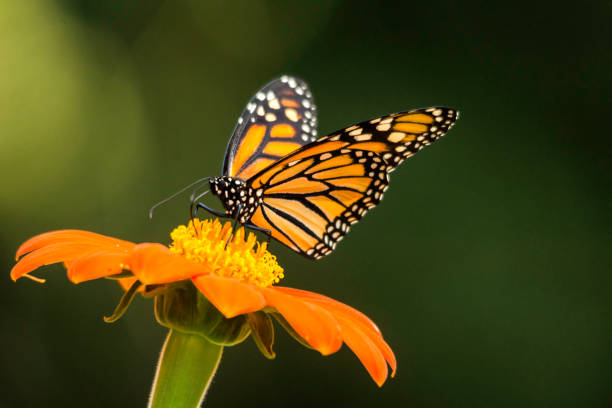Monarch butterflies’ life cycle does not have much difference from other species of butterflies. On the other way round, if you’re conversant with the life cycle of butterflies, you can get some point right for the monarch butterflies’ life cycle.
In our previous article, “why are monarch butterflies endangered species” we discussed so shocking facts that are causing the disappearance of this butterfly.
However, in this article, we are discussing the different life stages of monarch butterflies.
Monarch Butterflies Life Cycle
Monarchs carry on with four life stages: egg, hatchling, pupa, and grown-up.
They can mate a few times, at times for 16 hours all at once, after which the female promptly begins laying eggs on milkweed plants.
Monarch eggs are about the size of a pinhead and are football molded, with vertical edges, said Laura Lukens, the public checking facilitator for MJV. The eggs are grayish to yellow in shading.
Female monarch butterflies ordinarily lay 300 to 500 eggs on various types of milkweed plants (Asclepias sp.), yet they’ve been known to lay in excess of 1,100 eggs in bondage.
Nonetheless, just about 10% of those eggs make due to the hatchling stage because of substantial predation by creepy crawlies and small bugs. It takes the eggs around three to five days to incubate.
From the egg arises a little, striped caterpillar, or butterfly hatchling. Hatchling is the term for a bug’s development stage.
As the little monarch caterpillars develop, they become too huge for their semi-inflexible exoskeleton and should shed and supplant this external layer multiple times, as indicated by MJV.
The time frame between each shed is called an instar.
This development period doesn’t keep going long the initial four instars last somewhere in the range of one and three days each, and the fifth instar endures somewhere in the range of three and five days.
Between the first and fifth instar, monarchs can develop from a little over 0.08 inches (2 millimeters) in length to 1.75 inches (45 mm) long.
Toward the finish of the hatchling stage, the caterpillar tracks down a protected spot to dangle from so it can change into a butterfly.
When joined, the caterpillar sheds its skin one final opportunity to uncover a jade-green sheath or chrysalis.
Albeit a chrysalis resembles a casing in that it serves to ensure the creating creepy-crawly, they are not the equivalent.
Covers are silk covers made only by moths, while chrysalises are hard exoskeletons that aren’t made of silk. During this progress from hatchling to grown-up, the monarch is known as a pupa.
In a typical summer climate, the pupa stage can last somewhere in the range of eight and 15 days. After the pupa stage, the monarch rises up out of its chrysalis as a butterfly.
Monarch butterflies have orange wings befuddled by a cross-section of dark veins. Females are hazier in shading and have thicker veins, while guys have two dark spots on the veins in their hindwings, as per MJV.
The boundary of the wings is dark with white, brown, and yellow spots in the two guys and females. A monarch’s wingspan is 3 to 4 inches (7 to 10 centimeters).
Read also: How Long Do Monarch Butterflies Live and Move? Research Tells
Monarch Butterfly Life Cycle Video
Here’s a video of the monarch butterfly life cycle;
Conclusion
The life cycle of the monarch butterfly should be enhanced to prevent this butterfly from completely going extinct. The Monarch Joint Venture (MJV), a non-benefit association of associations that work with monarch preservation should establish more sub-bodies to ensure the safety and well-being of these butterflies.

